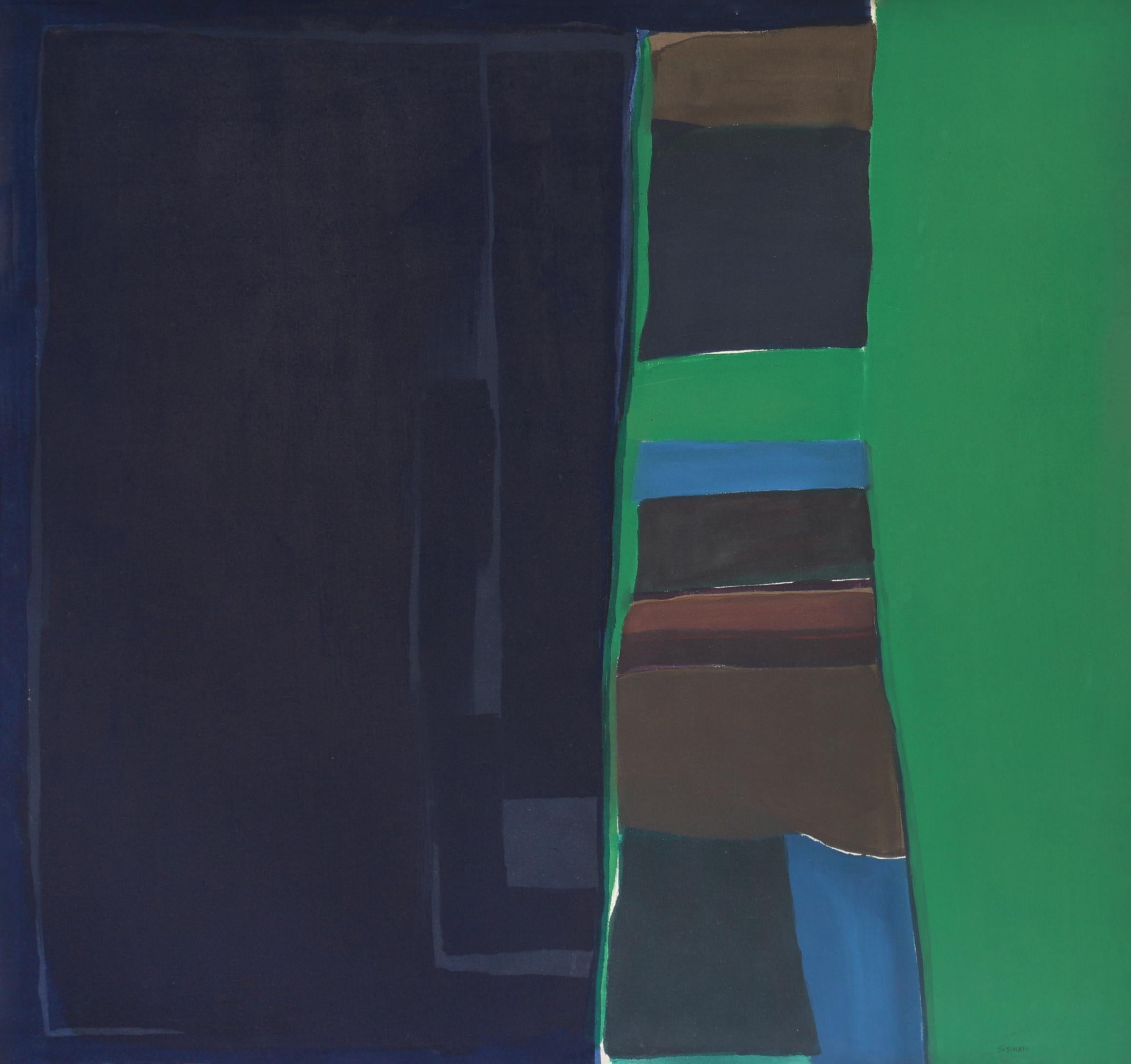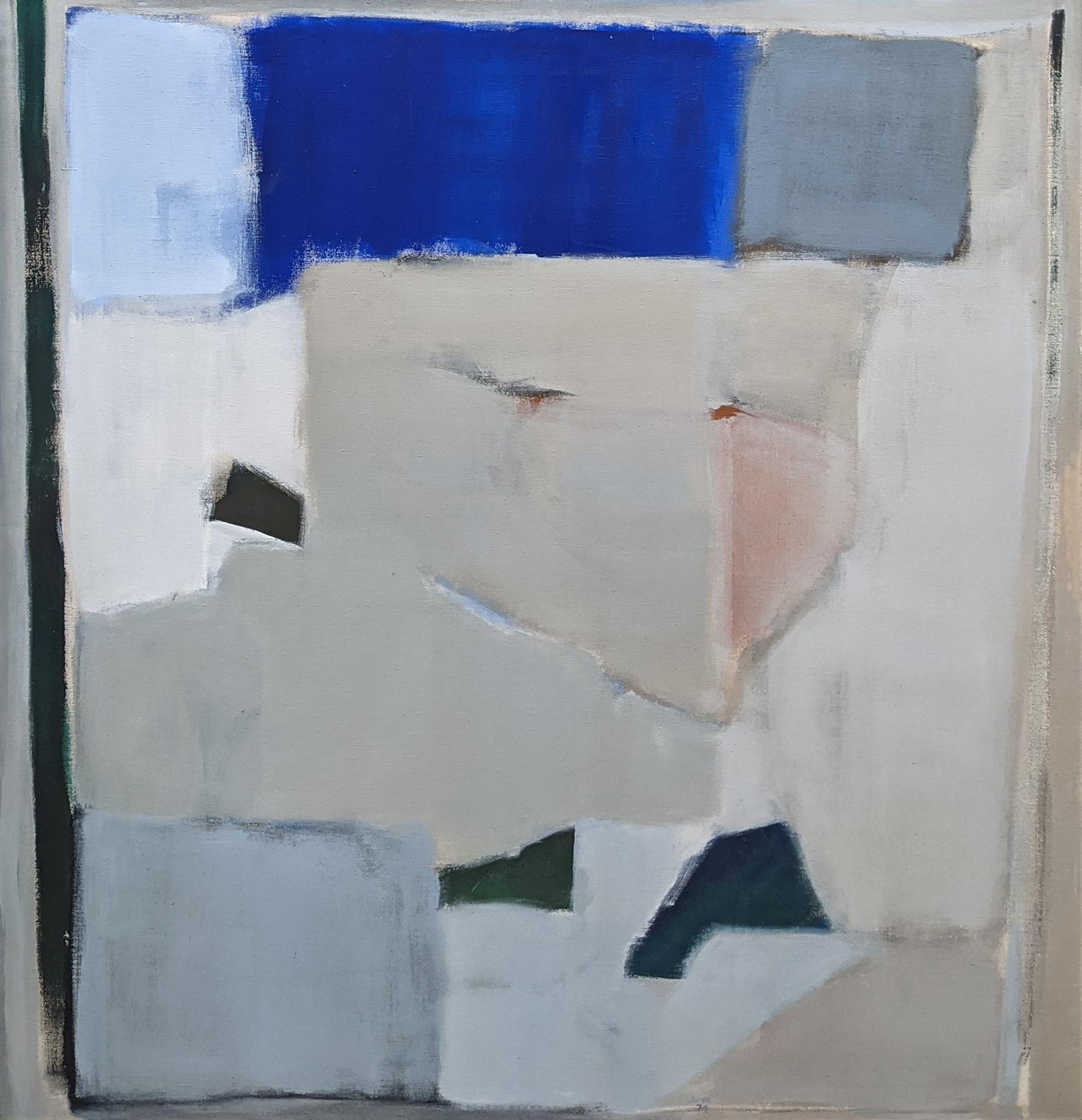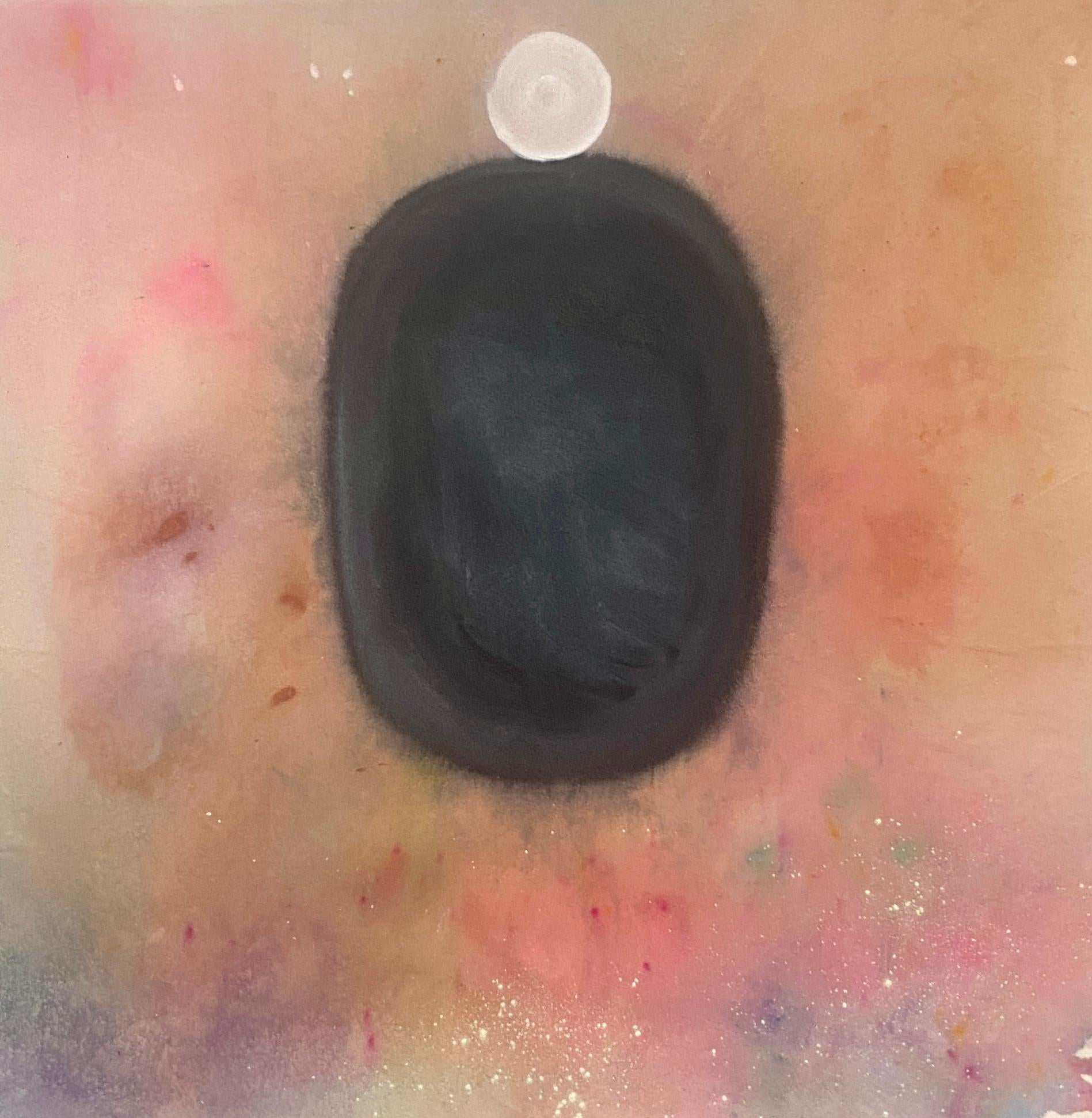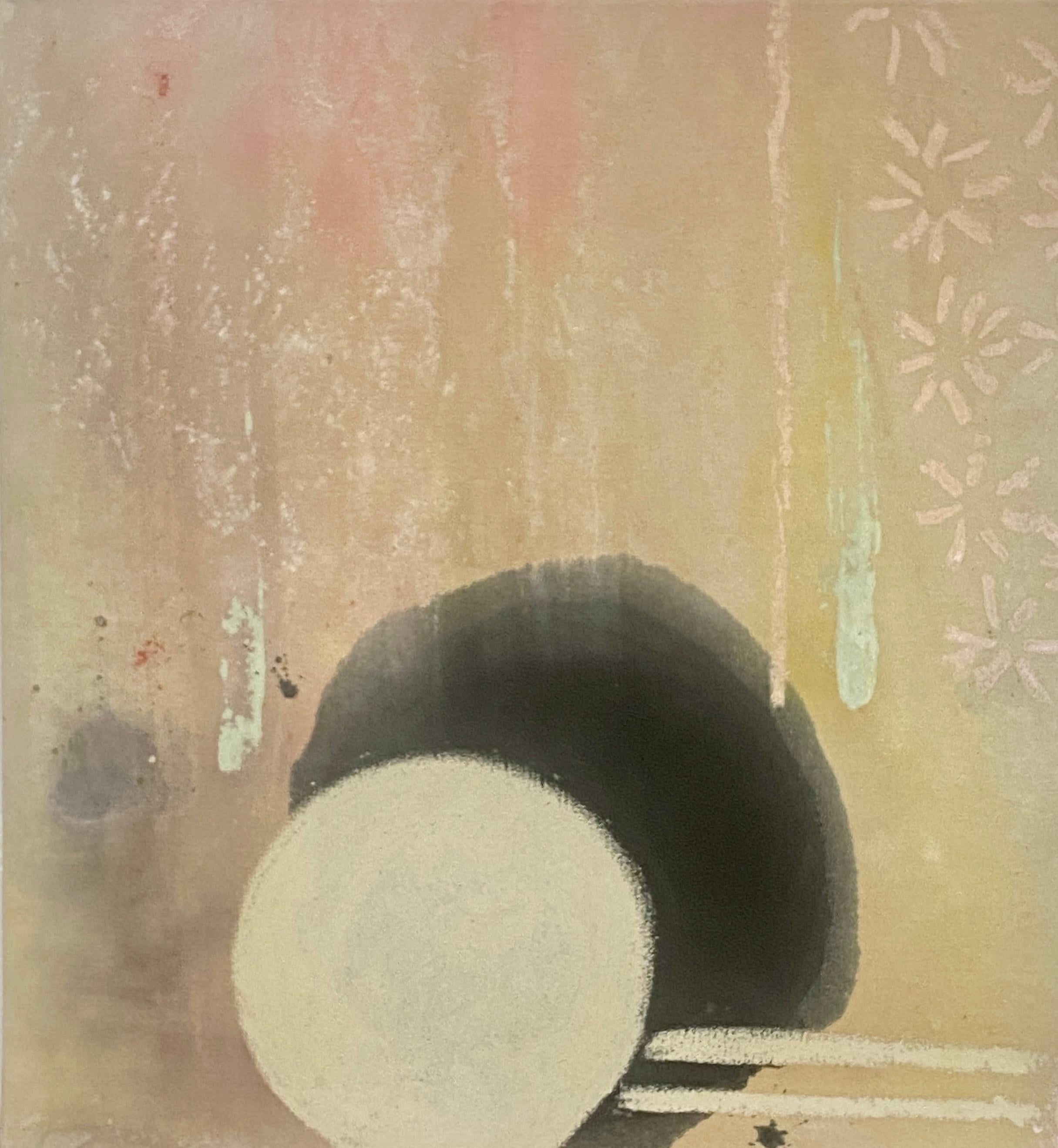Items Similar to “Untitled.” Gabriele Evertz, Geometric Color Field, Bright Rainbow
Want more images or videos?
Request additional images or videos from the seller
1 of 4
Gabriele Evertz“Untitled.” Gabriele Evertz, Geometric Color Field, Bright Rainbow1993
1993
About the Item
Gabriele Evertz
Untitled, 1993
Acrylic on canvas
48 x 48 inches
Provenance:
The artist
Private Collection, Long island (acquired from the above)
Gabriele Evertz (b. 1945 Berlin, Germany; lives Brooklyn, NY) has exhibited her work in solo and group exhibitions internationally, including in Argentina, Australia, Brazil, France, Germany, Greece, Italy, New Zealand, United Kingdom, and the United States. Her recent museum exhibitions include the Columbus Museum (Columbus, OH), Heckscher Museum (Huntington, NY), Hillwood Art Museum (Brookville, NY), Louisiana Art & Science Museum (Baton Rouge, LA), MoMA PS1 (Long Island City, NY), Museo de Art Contemporáneo (Buenos Aires, Argentina), Osthaus Museum Hagen (Hagen, Germany), Patricia & Phillip Frost Art Museum (Miami, FL), and Ulrich Museum (Wichita, KS).
Evertz is a member of the prestigious American Abstract Artists, nominated by the late artist Mac Wells in 1996. Her work is included in many public collections worldwide, such as the Art in Embassies Program of the U.S. Department of State, British Museum, Brooklyn Museum, Columbus Museum of Art, Ewing Gallery / University of Tennessee Knoxville, Hallmark Collection, Harvard University Art Museum, Metropolitan Museum of Art, Mississippi Museum of Art, Museo de Art Contemporáneo (Buenos Aires), Museum of Fine Arts Boston, Museum of Modern Art / Library Special Collection, Museum Modern Art (Hünfeld), New York Public Library, New Jersey State Museum, Osthaus Museum Hagen, Phillips Collection, Princeton University Library, St. Lawrence University Art Museum, Stiftung für Konstruktive und Konkrete Kunst (Zürich), Whitney Museum of American Art, and Wilhelm Hack Museum, among others.
In addition to her painting practice, Evertz was Professor of Art, Painting in Hunter College’s Department of Art & Art History, NYC from 1990-2018. She is a key protagonist in the renowned Hunter Color School, alongside other color painters, including Vincent Longo, Doug Ohlson, Robert Swain, and Sanford Wurmfeld. Over the past fifteen years, Evertz has also curated several critically-acclaimed artist retrospectives and exhibitions, including Dual Current: Inseparable Elements in Painting and Architecture; Visual Sensations: Robert Swain Paintings, 1967-2010; Presentational Painting III; Seeing Red: An International Exhibition of Nonobjective Painting (co-curated with Michael Fehr); Set in Steel: The Sculpture of Antoni Milkowski; and Mac Wells: Light into Being (co-curated with Robert Swain).
- Creator:Gabriele Evertz
- Creation Year:1993
- Dimensions:Height: 48 in (121.92 cm)Width: 48 in (121.92 cm)
- Medium:
- Movement & Style:
- Period:
- Condition:
- Gallery Location:New York, NY
- Reference Number:1stDibs: LU184129925352
About the Seller
5.0
Platinum Seller
These expertly vetted sellers are 1stDibs' most experienced sellers and are rated highest by our customers.
Established in 2021
1stDibs seller since 2022
59 sales on 1stDibs
Typical response time: <1 hour
- ShippingRetrieving quote...Ships From: New York, NY
- Return PolicyA return for this item may be initiated within 3 days of delivery.
More From This SellerView All
- "Nineteen" Thomas Downing, Purple Washington Color School Design, Shaped CanvasBy Thomas DowningLocated in New York, NYThomas Victor Downing (1928 - 1985) Nineteen, 1968 Acrylic on canvas 35 1/2 x 16 1/2 inches Signed on the reverse Provenance: Estate of the artist Henri Gallery, Washington, D.C. Private Collection, Washington, D.C. Thomas Downing was born in Suffolk, Virginia. In 1950, after graduating from Pratt Institute in New York City, he received a grant from the Virginia Museum of Fine Art to study in Europe. Upon returning from Europe, he settled in Washington, DC to teach at Catholic University. In 1954 Downing became a friend of Kenneth Noland, whose life drawing course he attended. From 1955 to 1956 Downing shared a studio with Howard Mehring, another artist who came to be identified with the Washington Color School. Downing had his first one-man show at the Washington Workshop Center for the Arts in 1959. That year, Downing, Mehring, and Betty Pajac founded Origio, a cooperative art gallery in Washington. In 1959 Downing first began using the small dot in his work, a motif he explored fully into the 1970s. In the early works colorful dots determined the structure of the painting in their size, position, and repetition within a grid. Often there was a sense of concentration and expansion of the composition from the center to the edge of the canvas, achieving a visual impression of expanding open space. Looking for the fusion between the grid and color, Downing eliminated overlapping dots in 1962. The dots arranged in grids seem to project from the canvas surface, giving the impression the color floats unrestricted by the square format of his paintings. Downing’s position in the Washington Color School came from his consistent approach to color. The canvas was the receptacle of color, on which Downing often worked in tonal modulations of a hue. Downing developed shaped canvases in 1966 as a structural solution to his deeper consideration of the “spatial definition” of color. After first working in a parallelogram shape, Downing next worked in chevron-shaped canvases that examined the illusionistic qualities of color. He exhibited these works in a solo exhibition at the Corcoran Gallery in 1966-1967 and later at the Allan Stone Gallery in New York in 1967. Downing’s second series of shaped canvases titled Folds were created in 1968. In the Fold series he discovered a new effect of relief and spatial depth within a flat work that could be enhanced by color. The projections and folding in the Fold paintings suggest the paintings exist in a world without gravity. Downing exhibited in a group show at Jefferson Place Gallery in 1960 and had his first solo exhibition there in the spring of 1961. Downing had solo exhibitions in New York at Allan Stone Gallery in 1962, 1967, and 1968. He also had solo exhibition in New York at Stable Gallery in September 1963 and January 1965. In the early 1970s Downing had regular solo exhibitions at the Pyramid Galleries in DC. In the 1960s Downing was included in important museum exhibitions, including: Post Painterly Abstraction at Los Angeles County Museum of Art, 1964 (Clement Greenberg curated and included three of Downing’s dial paintings); The Responsive Eye at the Museum of Modern Art, 1965; Colorists, 1950-1965 at the San Francisco Museum of Art, 1965; Systemic Painting at the Solomon R. Guggenheim Museum, New York, 1966; and Color Field Painting at the Philadelphia Museum of Art in 1970. Thomas Downing: Recent Paintings was held at the Corcoran Gallery of Art in December 1966 - January 1967. A solo exhibition of his paintings from 1962 to 1968 was held at the La Jolla Museum of Art then travelled to the Phoenix Art Museum in 1968. Downing had a solo exhibition at the Phillips Collection in 1985. Downing taught at the Corcoran School of Art and Design, Washington, DC from 1965 to 1968. There he was influential for the next generation of DC color...Category
1960s Color-Field Abstract Paintings
MaterialsCanvas, Acrylic
- "Eleven Thirteen, (Dancing Line Series), " Elliott Thompson, Color Field AbstractLocated in New York, NYElliott Thompson Eleven Thirteen, (Dancing Line Series), 1972 Signed, Elliott Thompson, dated, 2/72, and inscribed, Eleven Thirteen, on verso and agai...Category
1970s Color-Field Abstract Paintings
MaterialsCanvas, Tape, Acrylic
- "Burnt Orange Seams" Gerome Kamrowski, Color Field, Abstract ExpressionismBy Gerome KamrowskiLocated in New York, NYGerome Kamrowski Burnt Orange Seams, 1979 Acrylic on canvas 30 x 24 inches Gerome Kamrowski was born in Warren, Minnesota, on January 19, 1914. In 1932 he enrolled in the Saint Paul...Category
1970s Color-Field Abstract Paintings
MaterialsFoam, Mixed Media, Acrylic, Board
- "Night Road" Gerome Kamrowski, Abstract Expressionism Surrealism, Purple ImpastoBy Gerome KamrowskiLocated in New York, NYGerome Kamrowski (1914 - 2004) Night Road, 1966 Acrylic on canvas 58 1/4 x 96 1/4 inches Signed and dated Provenance: The Artist The Kamrowski Estate (by family descent in 2004) Exhibited: The Detroit Institute of Arts, Detroit, Michigan, 56th Exhibition for Michigan Artists, November 18 - December 31, 1966, no. 32, illustrated (Night Road was the winner of the "Phyllis King Weiner Memorial Prize" at this exhibition). Ann Arbor, University of Michigan Museum of Art, Gerome Kamrowski: A Retrospective Exhibition, August 30 - October 16, 1983, no. 70, illustrated. Tarpon Springs, Florida, Leepa-Rattner Museum of Art, St. Petersburg College, Gerome Kamrowski: An American Surrealist, September 8 - October 27, 2002, no. 23. Chelsea, Michigan, River Gallery, Gerome Kamrowski: 1914-2004, A Memorial Retrospective, October 30 - December 5, 2004. Gerome Kamrowski was born in Warren, Minnesota, on January 19, 1914. In 1932 he enrolled in the Saint Paul School of Art (now Minnesota Museum of American Art - MMAA), where he studied with Leroy Turner, and Cameron Booth. Both Turner and Booth had been students of Hans Hofmann, and were also associated with the Abstraction-Création group in Paris. It was from these peers that Kamrowski was introduced to a "kind of expressionist cubism." In 1933 Kamrowski was awarded a scholarship to the Art Students League, where he would study in New York under Hans Hofmann. Unfortunately, immigration problems had prevented Hofmann from assuming his post. Nevertheless, Kamrowski decided to remain in New York for a short time, to attend classes taught by George Grosz. After a few weeks, he returned to St. Paul, and found a position in the mural painting division of the Minnesota FAP/WPA (Works Progress Administration). In 1936 he contributed “Synthetic Cubist Style” frescoes in the Northrup Auditorium of the University of Minnesota. In 1937 Kamrowski went to Chicago to study under László Moholy-Nagy and Alexander Archipenko at the New Bauhaus (now Illinois Institute of Technology's Institute of Design). There he was exposed to new and interesting ideas regarding the role of nature in art and the "geometric basis of natural form". In 1938 Kamrowski received a Guggenheim fellowship to attend Hans Hofmann's summer school in Provincetown, Massachusetts. He then relocated to New York where he met William Baziotes. Together they shared a fascination in Surrealist automatic writing, and both artists explored its possibilities in their paintings. Kamrowski was particularly drawn to Surrealism's fundamental appeal of intuition over intellect. He was interested seeking a process that "binds all things together...a kind of cosmic rhythm". Throughout the late 1930s and early 1940s while living in New York, Kamrowski became an integral part of the emerging surrealists. In 1942, the artist Roberto Matta attempted to form a group of artists to investigate new applications for Surrealist methods. He invited Kamrowski, along with William Baziotes, Jackson Pollock, Peter Busa...Category
1960s Abstract Expressionist Abstract Paintings
MaterialsCanvas, Acrylic
- "Untitled, " Knox Martin, Abstract ExpressionismBy Knox MartinLocated in New York, NYKnox Martin (1923 - 2022) Untitled Signed to lower edge Acrylic and gold foil on canvas 9 x 9 inches Knox Martin (1923-2022) was an esteemed New York School painter. Knox Martin was born in 1923 in Barranquilla, Colombia. He was the son of the aviator, painter, and poet William Knox Martin, the first man to fly over the Andes Mountains. After serving in World War II, Knox Martin attended the Art Students League of New York on the G.I. Bill from 1946-1950, where he studied with Harry Sternberg, Vaclav Vytlacil, Will Barnet, and Morris Kantor. In 1954, Knox Martin's friend Franz Kline placed a painting of his in the Stable Gallery Annual. Charles Egan of the renowned Charles Egan Gallery saw Knox Martin's painting at the Stable Gallery and asked Martin to show his work in a one-man show for the tenth anniversary of the Egan Gallery. Since then, Knox Martin was a celebrated painter, sculptor and muralist. Knox Martin had an extensive exhibition record and his work is in museum, corporate and private collections worldwide. His two best-known murals in NYC are Venus and Woman with Bicycle...Category
Late 20th Century Abstract Abstract Paintings
MaterialsGold, Foil
- "Untitled, " Sherron Francis, Female Abstract Expressionism, White ImpastoBy Sherron FrancisLocated in New York, NYSHERRON FRANCIS (AMERICAN, B. 1940) Untitled, 1977 Acrylic on canvas 33 x 27 1/2 inches Signed, titled and dated on the reverse A reappraisal is long ...Category
1970s Abstract Expressionist Abstract Paintings
MaterialsCanvas, Acrylic
You May Also Like
- Blue and Green AbstractBy Claudia SisemoreLocated in Salt Lake City, UT"Blue and Green Abstract" by Claudia Sisemore, acylic on canvas, 43.5 x 46 inches, $4,800. "I have a vague idea of what I am going to paint. I...Category
1970s Color-Field Abstract Paintings
MaterialsCanvas, Acrylic
- Untitled, 1974By Claudia SisemoreLocated in Salt Lake City, UT"Untitled, 1974" by Claudia Sisemore, acylic on canvas, 58 x 56 inches, $7,200. Unframed. "I have a vague idea of what I am going to paint. I read that many artists are inspired by an idea before they begin their work and plan their approach and process based on that idea or muse. Others become inspired after they have begun working and watching colors, shapes and designs form. I basically belong the second group. Usually, after painting begins in a loose, free manner, I become excited by certain colors and patterns and continue from there." -Claudia Sisemore -- Caudia Sisemore says she was teaching English when artist David Chaplin (an equally popular and influential teacher) was at Weber and initially got her into landscape painting. “Then he took me to a show at the Art Barn and Lee [Deffebach] was showing there [with Don Olsen...Category
1970s Color-Field Abstract Paintings
MaterialsCanvas, Acrylic
- Untitled, 1975By Claudia SisemoreLocated in Salt Lake City, UT"Untitled, 1975" by Claudia Sisemore, acylic on canvas, 41.5 x 50 inches, $4,800. "I have a vague idea of what I am going to paint. I read that many artists are inspired by an idea before they begin their work and plan their approach and process based on that idea or muse. Others become inspired after they have begun working and watching colors, shapes and designs form. I basically belong the second group. Usually, after painting begins in a loose, free manner, I become excited by certain colors and patterns and continue from there." -Claudia Sisemore -- Caudia Sisemore says she was teaching English when artist David Chaplin (an equally popular and influential teacher) was at Weber and initially got her into landscape painting. “Then he took me to a show at the Art Barn and Lee [Deffebach] was showing there [with Don Olsen...Category
1970s Color-Field Abstract Paintings
MaterialsCanvas, Acrylic
- Summer solstice moon - Abstract color field stain paintingLocated in Philadelphia, PA'summer solstice moon' 26"x24" acrylic and oil pigment stick on raw cotton canvas by Abstract painter Elisa Niva. This earthy and soft painting uses the soak- method created by He...Category
2010s Color-Field Abstract Paintings
MaterialsOil Crayon, Cotton Canvas, Acrylic
- Earthen Tantric Painting #3- tantric soak stain meditation paintingLocated in Philadelphia, PAEarthen Tantric Painting #3- tantric soak stain meditation painting by abstract artist Elisa Niva 30”x40” Acrylic on cotton canvas. One of the main inspirations of this soak-stain ...Category
2010s Color-Field Abstract Paintings
MaterialsCotton Canvas, Acrylic
- Earthen Tantra painting #3 - Abstract tantric stain paintingLocated in Philadelphia, PAEarthen Tantra painting #3 - Abstract tantric stain painting 28" x30" Acrylic and oil pigment stick on raw cotton canvas by abstract artist Elisa Niva. One of the main inspiration...Category
2010s Color-Field Abstract Paintings
MaterialsOil Crayon, Cotton Canvas, Acrylic





